Carmelite Church,
Famagusta, North Cyprus
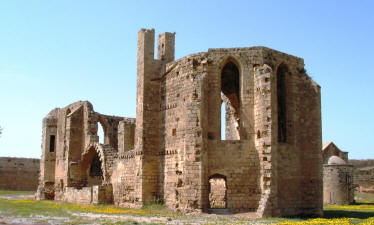 |
| Carmelite Church |
The church of St Mary of the Carmelites is situated in the north west corner of Famagusta.
In the 13th century, as the Moslem armies gradually reclaimed the Holy Land, many middle eastern Christians fled to Famagusta. Although Christian, their specific beliefs differed from that of Latin or Orthodox Christians. Because of this, they tended to congregate in the same area, and here you will find churches of the Nestorians, Jacobites and Armenians, as well as the Carmelites.
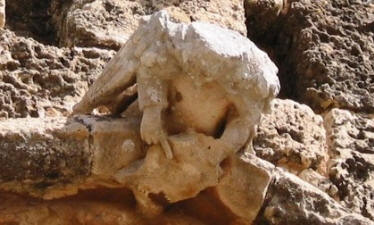 |
| An Angel Pointing to a Scroll |
Because the Carmelites originated from the Carmel mountains of Syria, this area became known as the Syrian quarter of the city.
St Mary of the Carmelites, was built in the 14th Century as the church of a monastery. It has a single nave of four bays and a three-sided apse. In the second bay, two small chapels were added. The roof had ribbed vaults, and the exterior walls were supported by buttresses.
In its day, it was an important church. The tomb of Peter Thomas, who was the Pope's representative and the Patriarch of Constantinople, who died in 1366 was in this church.
The walls of the church were covered in frescoes, and some of those are still (just) visible. Outside the west door, you can also see the remains of sculptures above the entrance.
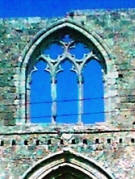 |
| March 2000 |
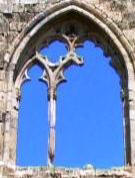 |
| March 2006 |
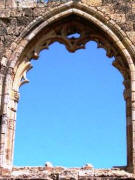 |
| March 2008 |
Most guide books will tell you that some fine tracery can be seen in the west window. Sadly that is not the case, and this tracery is being lost for ever.
The ravages of time, and the blocking of all international aid by the Republic of Cyprus, has meant that there is not the funding to finance restoration work, and as the series of photos show, this gradual destruction continues at a rapid pace.
The church can be found close to the Martinengo Bastion, and is marked on some maps as being inside a restricted military area. This is not correct, and has not been for some time, although the barbed wire and "no photography" signs are still in place.
See the location on Google maps.
Back to Famagusta index.